 |
Fort Churchill State Historic Park |
|
|
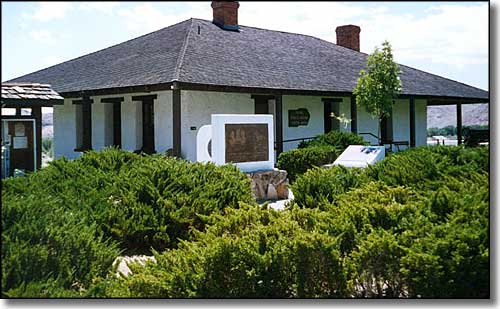 The Fort Churchill State Historic Park Visitor Center |
|
Built in 1860 to provide protection for Pony Express riders and early pioneers, Fort Churchill was abandoned only 9 years later. The catalyst for building the fort came when 3 white men from Williams Station (another Pony Express stop about 30 miles east of Carson City on the Carson River) kidnapped 2 Paiute girls on May 12, 1860, and held them prisoner. That was the final straw that ignited the Pyramid Lake War. The Paiutes had endured a very hard wnter and were blaming the whites for the destruction of the forage and food supplies that usually got them through hard times. This kidnapping and subsequent actions led to the Paiutes attacking Williams Station. Before it was over, they had killed the 3 men, released the girls and burned the station to the ground. Rumors spread fast, and of course the number of white dead and the number of Paiutes and Bannocks on the war path quickly blew out of proportion. 105 white men volunteered to go after the Paiutes and avenge the deaths of the 3 white kidnappers. They quickly came up with a bad plan and headed for Pyramid Lake. When they came up against the Paiutes, they were seriously out-generaled and out-numbered. At least 70 of the whites were killed in that first battle. Immediately, the white settlers back in the Carson Valley called for federal troops from California. When those troops arrived, they were joined by more local volunteers and they all moved against the Paiutes in early June. In this second battle, the Paiutes were out-numbered and forced to retreat, leaving between 60 and 160 of their men dead on the battlefield (as opposed to only 2 white dead). These events stopped the running of the Pony Express until sometime in June, 1860 when the shooting was finally over. |
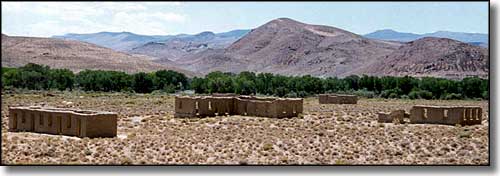 Some of the ruins at Fort Churchill |
|
After that, the federal government spent tens of thousands of dollars to construct Fort Churchill on the Carson River. The fort was named for Sylvester Churchill, then Inspector General of the US Army. Average troop strength at the fort was 200, but often companies of soldiers were out on patrol guarding the Pony Express route and carrying out expeditions against the Paiutes. In 1870, Buckland Station was built near the fort. Buckland was a supply center, former Pony Express stop, Butterfield Overland Stage Company stop and hotel. That was about the same time Fort Churchill was abandoned and sold for $750. In 1884, the post cemetery was excavated and the remains of former soldiers were all moved to another federal cemetery in Carson City. The remaining graves are those of members of the Buckland family. As Nevada didn't bid in the auction where the fort was originally sold, the state did finally come into ownership of 200 acres of the military reservation in 1932. In 1934, the Nevada Sagebrush Chapter of the DAR came into ownership of the property and they held it in trust until it was transferred to Nevada State Parks in 1957. In that gap between 1871 and 1957, the buildings of the fort served as temporary shelter for travelers on the Carson River Trail and as a source of building materials for other nearby structures. At this point, the Visitor Center is a more recent construction of the CCC and the remains of the original fort are maintained in a state of arrested decay by the Division of State Parks. Buckland Station Buckland Station was founded when Samuel Buckland homesteaded in this valley in 1859. His ranch was used as a waystation along the Carson River Trail and he provided safe haven and supplies to travelers, emigrants and the soldiers at Fort Churchill. The Overland Stage Company and the Pony Express kept horses at the ranch and used the place as a regular stage and mail stop. As Fort Churchill was dismantled, the Bucklands recycled parts of the fort's construction into their own growing 2-story ranch house. Nevada State Parks acquired Buckland Station in 1994 and has restored a significant portion of the ranch house in period style. The Station is located on the Carson River, anout 1/2 mile south of the entrance road to Fort Churchill. Also in 1994, Nevada bought 3,200 acres along the Carson River between Fort Churchill and the Lahontan State Recreation Area. These "Carson River Ranches" are a river corridor popular with hikers, canoeists, hunters, equestrians and birdwatchers because of the diverse plant and wildlife communities through here. The 4,461-acre Fort Churchill State Historic Park is located 40 miles east of Carson City and 36 miles west of Fallon, on the Carson River about 8 miles south of Silver Springs off US 95A. The 20 available campsites are large enough for travel trailers, tents and motor homes with each table and fire ring shaded by large cottonwoods. There is an RV dump station available but there are no hookups. Fires are permitted only in designated fire rings, barbecues or on portable stoves, but you'll need to bring your own firewood. The adobe ruins are very fragile, so don't be climbing on them. State law prohibits the collection of minerals, rocks, animals, plants, and artifacts. Pets are allowed but keep them leashed. Entry fees:
|
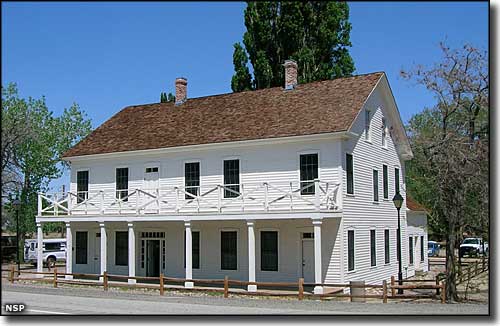 Buckland Station 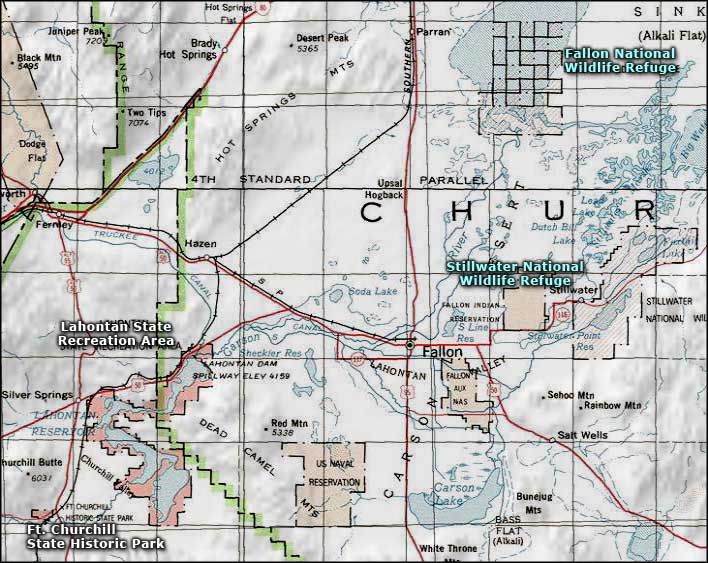 Fort Churchill State Historic Park area map 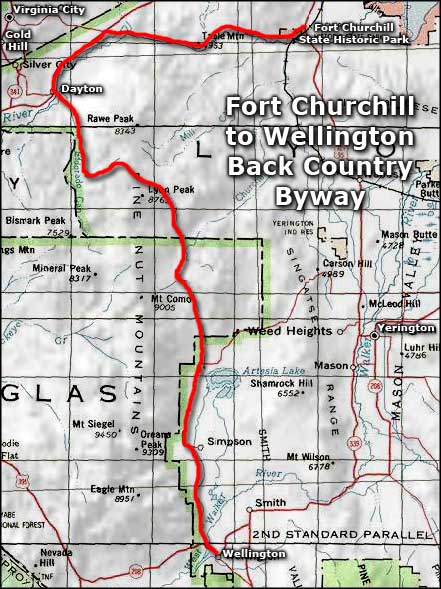 Fort Churchill to Wellington Back Country Byway area map |
|
|

|
| Index - Arizona - Colorado - Idaho - Montana - Nevada - New Mexico - Utah - Wyoming National Forests - National Parks - Scenic Byways - Ski & Snowboard Areas - BLM Sites Wilderness Areas - National Wildlife Refuges - National Trails - Rural Life Advertise With Us - About This Site - Privacy Policy |
| Photos of Fort Churchill State Historic Park courtesy of Nevada State Parks Area map courtesy of National Geographic Topo! Text Copyright © by Sangres.com. All rights reserved. |